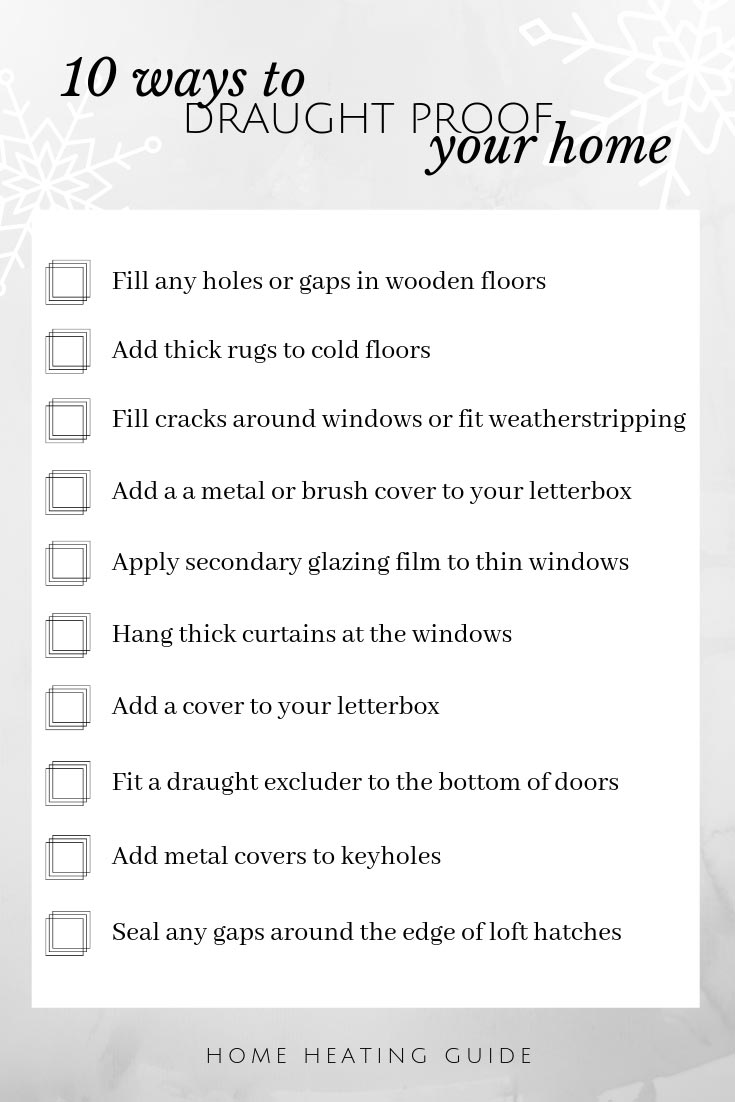Feel a Draught?
Many homes lose up to 20% of their heat through tiny gaps in doors and window frames. Cold air comes in from outside making your home harder to heat, using more energy and pushing up the costs of your heating bills. By installing draught proofing as a means of insulating your home, you could save around £20 a year in energy costs and reduce your carbon dioxide emissions by 140kg annually.
Draught proofing is one of the most simple and easiest forms of insulating your home and can be carried out without the need for professional help. Typical cost for this type of insulation is around £100 -200, so it will pay for itself in 5 – 10 years.
The most common areas where draughts originate are around windows, doorframes and letterboxes, especially in older homes where these may be a poor fit. Chimneys are a source of draughts, so if yours is unused, consider blocking it off. Check also if there are any gaps or cracks around air vents, plumbing, electrical equipment or wiring. Both internal and external doors can cause draughts as can cat flaps, keyholes, loft hatches and skirting boards.
There are many different types of insulating products available for protecting against draughts. Self adhesive strips can be fitted around windows, doors and letterboxes. These are inexpensive and are straightforward and easy to attach. Sealant can be used to fill cracks and gaps around door frames, window frames and skirting boards. Other products such as foams, brushes, shaped rubber or plastic strips and even ‘snakes’ can all be used to draught proof your home. All good DIY stores will stock a wide selection of suitable materials at reasonable costs.
Types of Draught Proofing
- Self Adhesive Foam Strip (good for doors)
- Brush Strip (good for sliding doors and sash windows)
- Silicone Sealant (good for filling uneven gaps)
- Sprung Strip (suitable for doors and uneven gaps)
Remember that ventilation is just as important as insulation and lack of proper ventilation can cause health problems. Allow sufficient air to circulate in rooms where there are solid fuel or gas appliances and think about installing extractor fans in rooms such as the bathroom or kitchen where the air is moist.
Download and print our draught proofing checklist below to audit your own home for pesky draughts.




